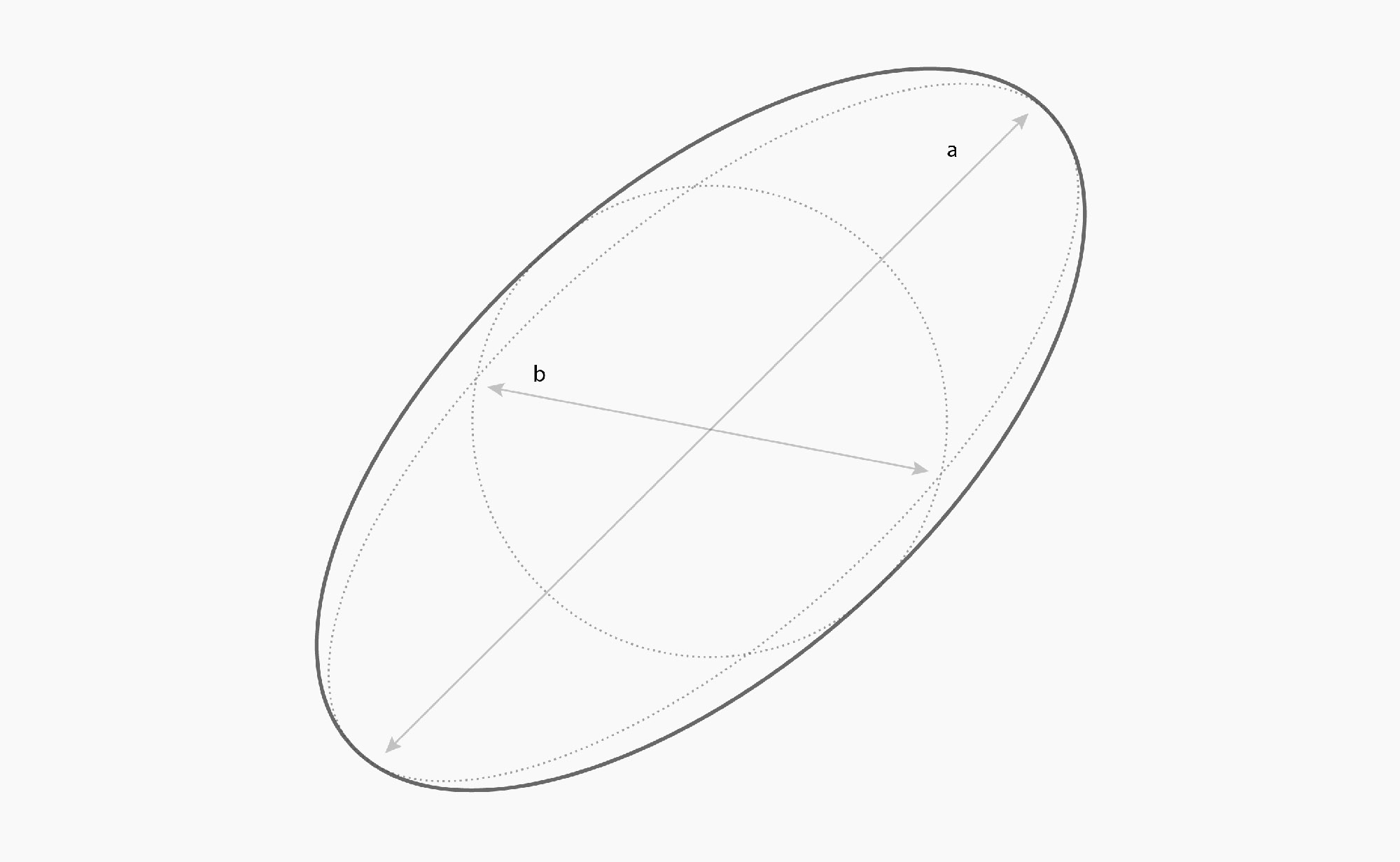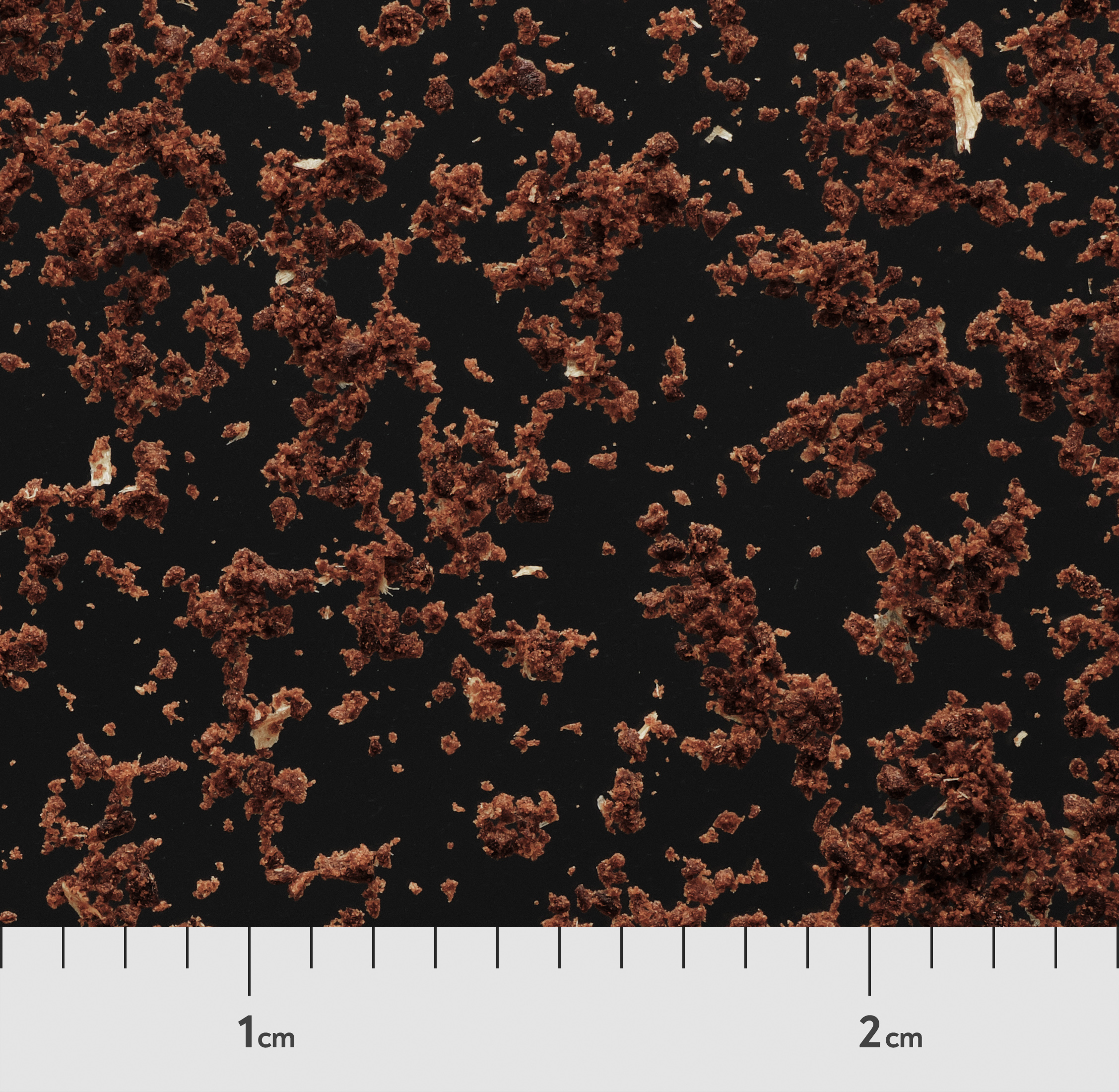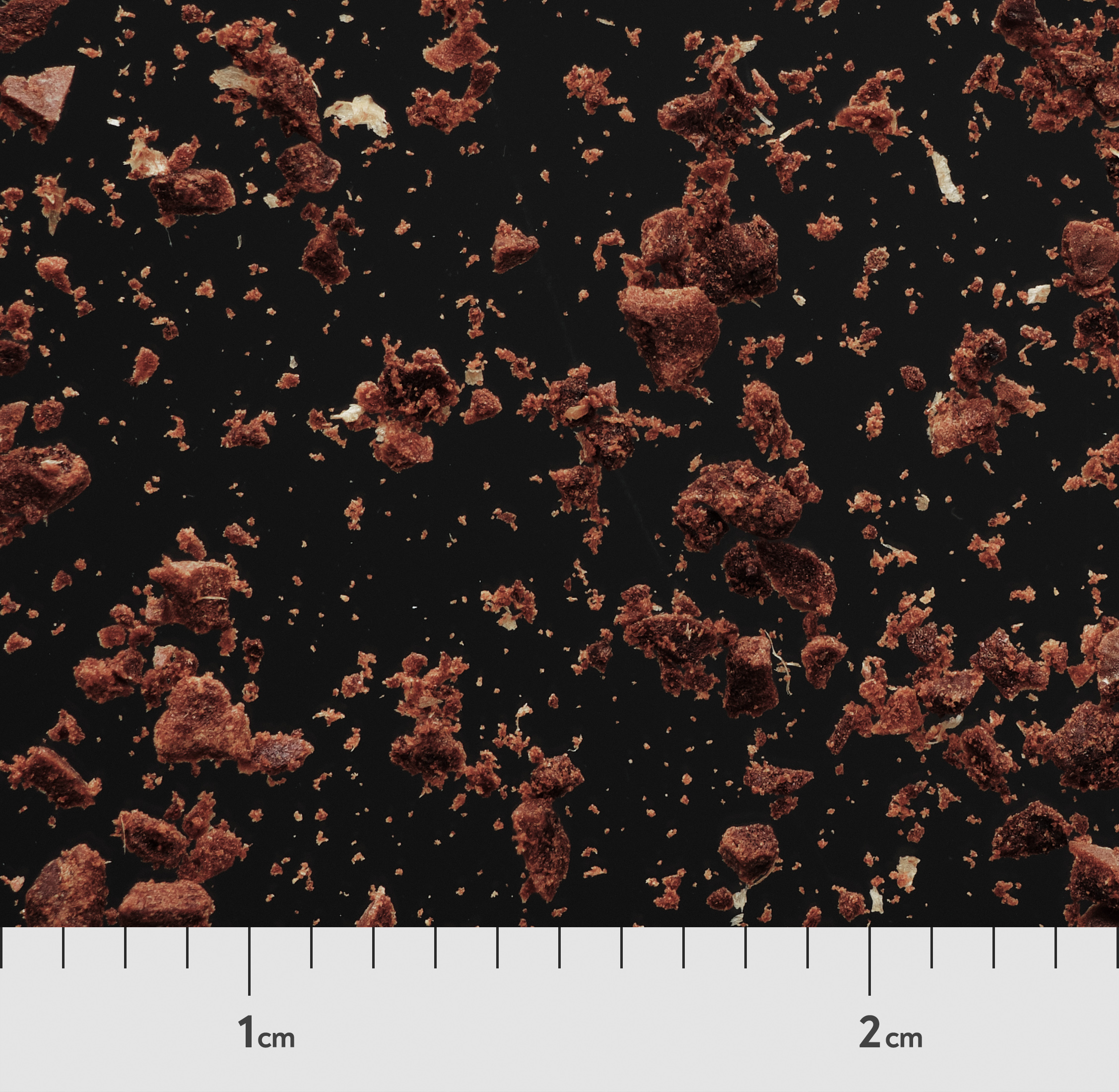Image left: espresso grinds, image right: filter grinds.
The point at which jamming occurs depends on multiple factors, including friction between particles, how easily they deform, and both the size and the shape of the particles involved. Jamming occurs when enough particles are in contact to form a network of connected particles (JM Valverde et al, 2004), which transmits force throughout the bed.
This point, when the density becomes high enough for the particles to form a connection across the whole bed, is called the percolation threshold.
The Percolation Threshold
‘Percolation’ in this context doesn’t refer to the water passing through the gaps in the coffee bed, but instead refers to the interconnectedness of the bed itself. As density, and therefore the number of connections between particles, increases, particles tend to be connected together into clusters. These clusters then form long range connections that eventually span the entire bed — this is the percolation threshold.
 The percolation threshold: a) at low density, few interactions exist between particles. b) Increasing density, by adding more particles, leads to more interactions between particles, forming clusters. c) Clusters form longer-range interactions as density increases. d) At the percolation threshold, a chain of interactions spans the whole bed.
The percolation threshold: a) at low density, few interactions exist between particles. b) Increasing density, by adding more particles, leads to more interactions between particles, forming clusters. c) Clusters form longer-range interactions as density increases. d) At the percolation threshold, a chain of interactions spans the whole bed.
This concept is mathematically related to our usual concept of percolation, which is water passing through a porous medium. In that case, the pores, rather than the particles, have to be interconnected across the bed in a similar way in order to allow the water to pass through.
Aspect ratio
Aspect ratio is the ratio between the longest and the shortest dimensions of a particle (think of this as length and width). Spheres have an aspect ratio of 1:1, while more elongated shapes have higher ratios.
 The aspect ratio of this particle is the ratio between the largest dimension (a) and the smallest dimension (b) — about 1:2
The aspect ratio of this particle is the ratio between the largest dimension (a) and the smallest dimension (b) — about 1:2
Particles with a higher aspect ratio will percolate at a lower density.


